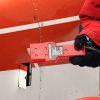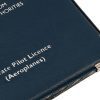Yakovlev Yak 52
Yakovlev Yak-52 Overview
The Yakovlev Yak-52 is a Soviet-era, two-seat, single-engine, aerobatic trainer aircraft that has become a favorite among aviation enthusiasts worldwide. Designed by the Yakovlev Design Bureau and introduced in 1976, the Yak-52 was originally developed for military pilot training, including aerobatic and combat maneuvers. Its robust design, exceptional handling, and high-performance capabilities make it an ideal platform for aerobatic flying and advanced pilot training.
Over the years, the Yak-52 has also gained popularity in the civilian aviation community as a recreational aircraft, offering enthusiasts the opportunity to own a rugged, high-performing machine that can handle aerobatics with ease.
Description
The Yak-52 is a low-wing monoplane constructed with a rugged, all-metal airframe designed to withstand the rigors of intense aerobatic maneuvers. It features tandem seating for two occupants, typically a pilot and an instructor, with the rear seat elevated for improved visibility during training.
Equipped with a nine-cylinder radial engine and a constant-speed propeller, the Yak-52 delivers smooth and reliable performance. The aircraft’s undercarriage consists of retractable main landing gear and a fixed tailwheel, a design choice that contributes to its durability on unimproved airfields.
The cockpit is functional and spartan, reflecting its military roots. Both seats are equipped with full controls and instrumentation, allowing for dual operation. The Yak-52’s systems include pneumatic brakes and landing gear, a unique feature that sets it apart from many Western aircraft. This pneumatic system is simple, reliable, and suited to its rugged operational environment.
Specifications
| General Specifications | Details |
|---|---|
| Manufacturer | Yakovlev Design Bureau |
| Production Years | 1976–present |
| Role | Aerobatic Trainer, Recreational Aircraft |
| Capacity | 2 (Pilot and Co-pilot/Instructor) |
| Length | 25 ft 2 in (7.7 m) |
| Wingspan | 30 ft 10 in (9.4 m) |
| Height | 8 ft 10 in (2.7 m) |
| Wing Area | 178 sq ft (16.5 m²) |
| Empty Weight | 2,260 lbs (1,025 kg) |
| Max Takeoff Weight (MTOW) | 2,866 lbs (1,300 kg) |
| Engine | Vedeneyev M-14P, 9-cylinder radial engine, 360 hp (268 kW) |
| Propeller | 2-blade, constant-speed propeller |
| Fuel Capacity | 26 gallons (98 liters) |
| Range | 310 nautical miles (357 mi / 500 km) |
| Cruise Speed | 180 knots (207 mph / 333 km/h) |
| Maximum Speed | 223 knots (256 mph / 413 km/h) |
| Rate of Climb | 2,000 ft/min (10.2 m/s) |
| Service Ceiling | 13,800 ft (4,200 m) |
| Aerobatic Load Limits | +7g / -5g |
Performance
The Yak-52 is renowned for its robust performance and exceptional aerobatic capabilities. Powered by the 360-horsepower Vedeneyev M-14P radial engine, the Yak-52 has the power to execute demanding aerobatic maneuvers such as loops, rolls, and spins with ease. Its design allows for a maximum load factor of +7g and -5g, making it well-suited for intensive aerobatic routines.
With a cruise speed of 180 knots and a top speed of 223 knots, the Yak-52 is also capable of moderate cross-country flights. Its range of 310 nautical miles ensures that it is not just limited to local flying but can also handle regional trips comfortably.
One of the aircraft’s defining features is its pneumatic system, which operates the brakes, landing gear, and flaps. This system is simple, durable, and particularly effective in the challenging environments for which the Yak-52 was originally designed.
The Yak-52’s handling is responsive and precise, making it a favorite for advanced flight training and aerobatic competition. However, its tailwheel configuration and unique pneumatic system require some adaptation for pilots accustomed to Western aircraft.
Conclusion
The Yakovlev Yak-52 is a remarkable aircraft that combines military-grade durability with outstanding aerobatic performance. Whether used for training, aerobatic competition, or recreational flying, the Yak-52 continues to be a beloved choice among pilots worldwide. Its unique design and history, coupled with its impressive capabilities, make it a standout in the realm of light aerobatic and sport aircraft.







